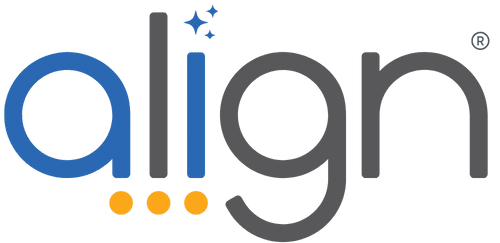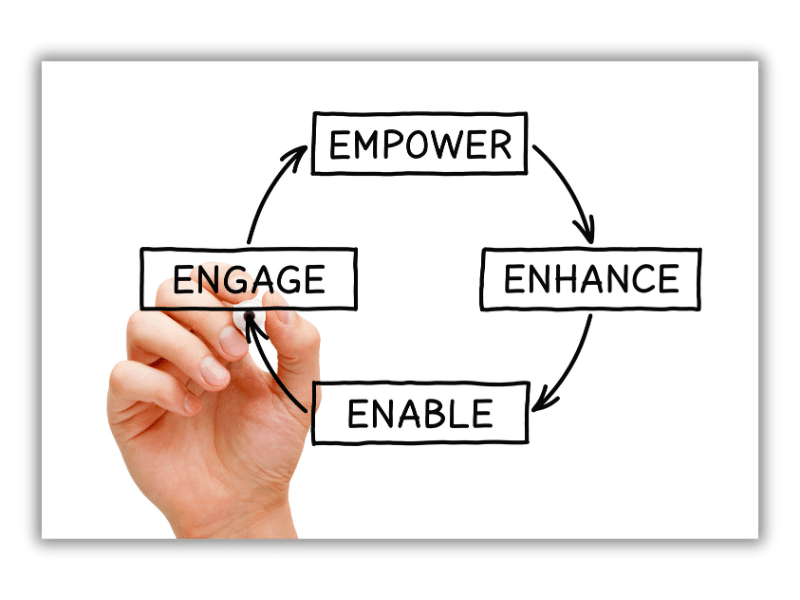You’ve seen it before: a brilliant founder or CEO. They’re the first to arrive, the last to leave, the fixer, the closer, the approver—and the nonstop decision‑maker. On the surface, everything hums. But underneath, progress stalls, teams freeze, burnout looms, and growth fizzles.
This scenario is a classic founder trap. And it kills enterprise value. No one wants to buy a company that collapses when the founder takes a vacation—or worse, leaves.
In this post, we’ll explore why founder-who-does-too-much is so common, why it slows growth, and how you as a coach can help them break dependency and build a team-first culture. We’ll also show how Align’s tools—like One‐Page Plans, Dashboards, Huddles, and Projects—support real, sustainable change.
🧠 Why Founder Bottlenecks Happen (and Why It’s So Destructive)
1. Ownership Isn’t Delegation
Founders own the vision. They funded the dream. Delegating feels risky—what if the team screws it up? So they bite the bullet and make the decisions themselves. For founders, there’s protection in control.
2. Systems and Structures Are Missing
When everyone goes through the founder, there’s no clarity around roles or priorities. Even top performers can’t know what matters most. Without structure, chaos wins.
3. Speed Feels Faster—Until It Doesn’t
At first, having one decision-maker accelerates progress. But as complexity grows, the bottleneck becomes painfully obvious. Decisions slow, teams demotivate, and innovation shrinks.
4. It’s Invisible Until It’s a Crisis
Founders often think, “I’m the glue.” But that invisibility comes with a cost: burnout, low trust, and fragile business dynamics. By the time the team complains or a deal falls apart, it’s late—but not too late.
🚩 The Problem: Founder as the Bottleneck
When all roads lead to one person:
-
Execution slows —every pause, every question, every approval adds friction.
-
Teams feel disempowered—they wait for permission instead of acting.
-
Innovation is stifled—no risk, no experiments, no creative stretch.
-
The leader burns out—constant firefighting, decision fatigue, weekends erased.
That last bit is deadly for enterprise value. Buyers want reliable engine rooms, not one-off businesses. When buyers see a siloed founder, they see risk: what if that person quits, gets sick, or decides to retire?
🔧 The Fix: Coach-Supported Solutions to Break Dependency
1. Start with Awareness
You can’t fix what you can’t see.
Diagnose the Bottleneck:
-
Run a quick workflow audit: track how many decisions need founder approval.
-
Collect team feedback: what slows them down, what’s frustrating?
-
Use Align Dashboards to track open decisions, tasks, and bottlenecks.
Then, hold up the mirror. Show them the costs: speed, morale, trust, and value. Replace defensiveness with curiosity: What could happen if delegation became the default? What if decisions didn’t stall?
Coaching Tip: Ask questions like, “What would happen if you stepped out of that decision chain?” or “How can your team gain the authority to own and act?”
2. Clarify Roles & Accountability
Ambiguity kills responsibility. Clarity creates ownership.
Tools & Tactics:
-
One‑Page Plan (OPP): Define who owns core functions—sales, ops, product, finance.
-
Quarterly Priorities: Assign at leader level. Who leads Q2 product roadmap? Who ensures onboarding runs smoothly?
Why It Works:
-
Reduces noise.
-
Builds confidence.
-
Shifts the CEO’s role from “doer” to “owner.”
Coaching Tip: Run a role‑mapping session. Use questions like: “Who owns customer acquisition? If that role vanished, would the work still get done?”
3. Create Team-Wide Visibility
When everyone knows what’s happening, no one has to ask.
Tools & Tactics:
-
Team Dashboards: Show progress on board, so leaders don’t email or ask for updates.
-
Traffic Lights or RAG (red-amber-green) status: Enables quick scans.
-
Milestone tracking: Especially for cross-functional initiatives.
Why It Matters:
-
Builds trust.
-
Empowers action.
-
Highlights early risks before they escalate.
Coaching Tip: Ask the founder, “When is the last time you got surprised?” Then show how dashboards can systematically prevent that.
4. Establish Cadence with Huddles and Meetings
Ad‑hoc conversations breed chaos. Defined rhythms build clarity.
Tools & Tactics:
-
Daily huddles (10–15 min): Quick status check—what’s done, what’s next, any blockers?
-
Weekly leadership meetings: Dive into what’s flagged. Surface issues, solve, plan.
-
Monthly or Quarterly reviews: Strategic alignment and priority reset.
Why It Works:
-
Moves communication upstream of the founder.
-
Ensures decision rights are clear.
-
Schedules interruptions so there are fewer surprise requests.
Coaching Tip: Introduce a 2-week cadence rule: Nothing gets new air before the weekly meeting. Let daily huddles handle daily detail.
5. Shift from Doing to Coaching
Founders are used to fixing. As coaches, we redirect that instinct to step back.
Tools & Tactics:
-
1-on-1s to coach leaders to solve problems.
-
Ask questions like: “What did you learn from that?” “What’s your proposed fix?”
-
Celebrate solutions. Highlight progress publicly.
Why It Matters:
-
Elevates team confidence.
-
Prepares next-generation leaders.
-
Frees the founder for strategy.
Coaching Tip: Track one recurring issue and ask the leader to propose—and lead—the resolution next time.
6. Build the Bench
A healthy org isn’t replaceable snap-in-time—it’s scalable.
Tools & Tactics:
-
Assign Quarterly Priorities to emerging leaders.
-
Use Align to track their milestones, then publicly celebrate wins.
-
Encourage 360° feedback to drive growth and trust.
Why It Matters:
-
Demonstrates capability.
-
Reduces single-point risks.
-
Prepares the business for scale or transition.
Coaching Tip: Challenge the founder: “Who can step up when you’re not there? How will we know they’re ready?”
🌟 The Payoff: Value, Scalability, Energy
When clients break the bottleneck, they unlock:
✅ Faster execution—decisions flow.
✅ Empowered teams—less asking, more solving.
✅ Leader capacity—less firefighting, more strategy.
✅ Scalable systems—GPM grows instead of founder’s time.
✅ Sell-ready business—buyers love independent operations.
That’s classic Smart Move: set the structure today, grow the engine tomorrow.
📚 Coach-Recommended Resources
-
Podcast: How to Live episode #092: “Let go to grow with Startup Scaling coach Rob Bier” — practical conversation on stepping out of founder habits.
-
Book: Who Not How by Dan Sullivan & Dr. Benjamin Hardy — a mindset-reset on delegation and collaboration.
-
Book: The E‑Myth Revisited by Michael Gerber — classic playbook to move from technician to leadership.
-
Internal Training: Align Academy weekly tips and tricks—spotlight on scaling execution with Align.
✅ Coach’s Challenge for the Month
-
Identify one client who’s clearly the bottleneck.
-
Work with them to:
-
Delegate one major function or project.
-
Assign it via Quarterly Priorities in Align.
-
Track it on a Team Dashboard.
-
Review progress weekly in a Huddle.
-
-
Afterwards, discuss:
-
What worked?
-
What didn’t?
-
How to deepen ownership further?
-
Then rinse and repeat with another priority. You’ll see trust build—bench strength grow—and the founder shift upstream, not in the weeds.
“Your client is the bottleneck.” It sounds harsh. The reality feels worse: stuck deals, overwhelmed teams, and founder burnout. But it doesn’t have to be permanent.
With this coach-driven shift—from awareness to systems, from doing to enabling—you help clients unlock sustainable growth. And when that happens, both the business and their leadership win.
That’s the definition of a Smart Move.





